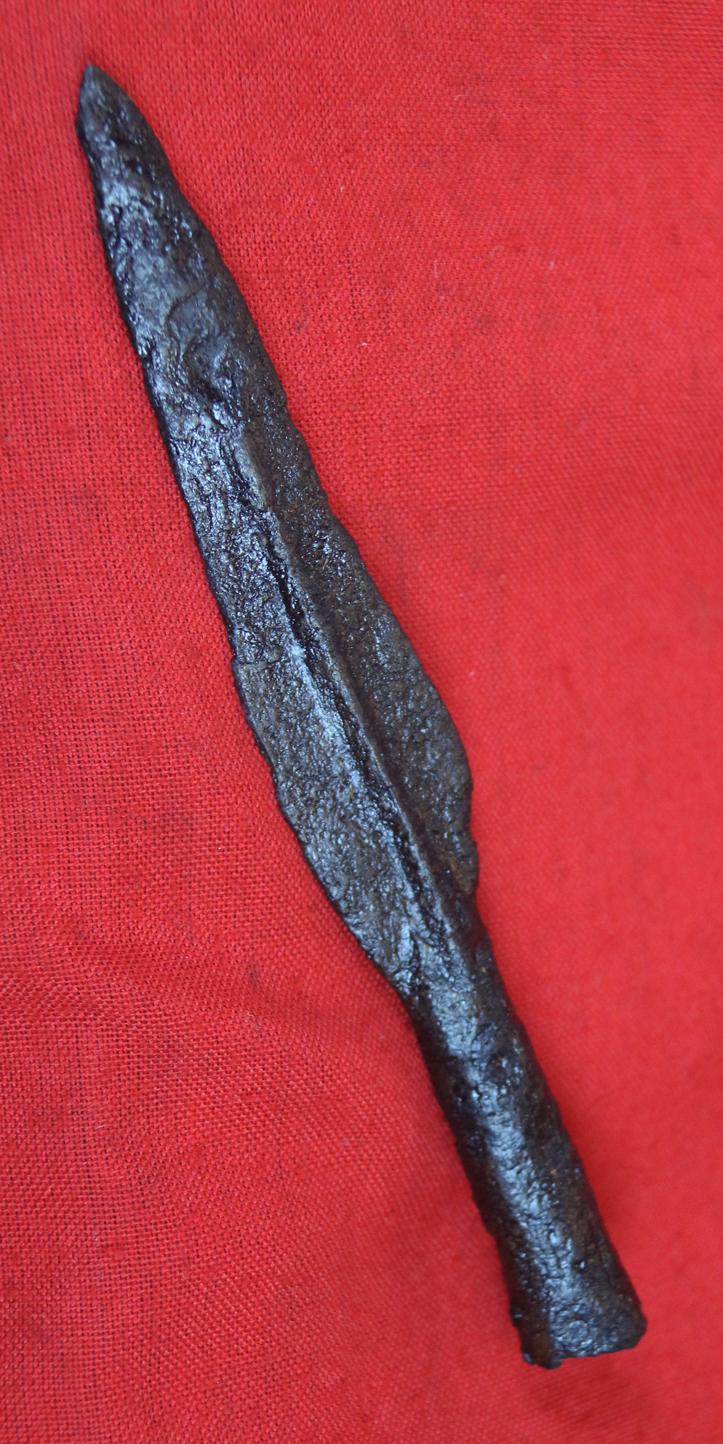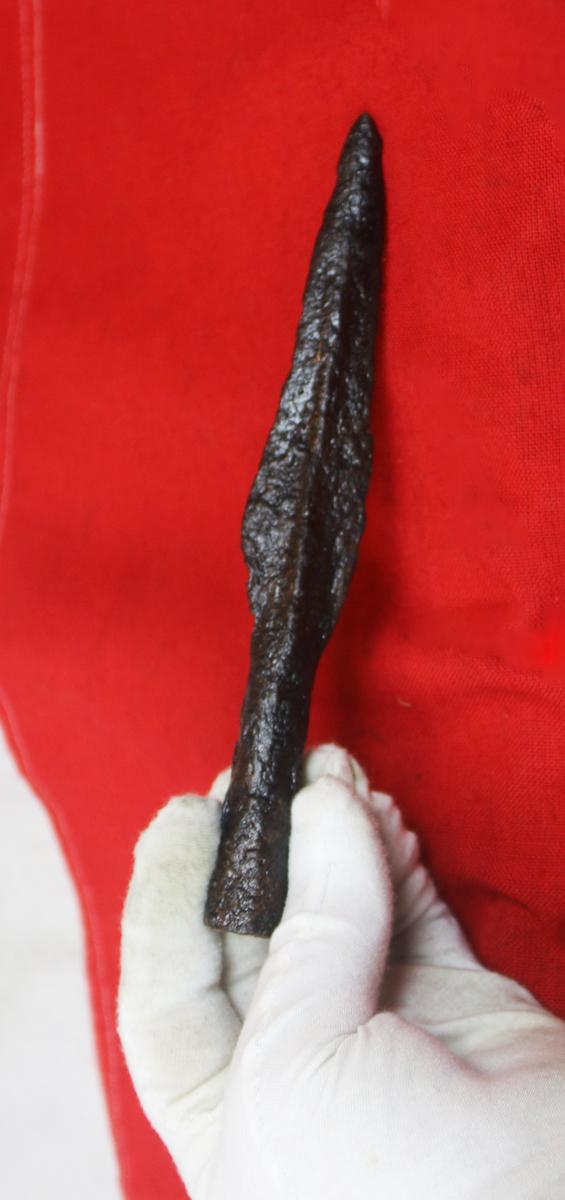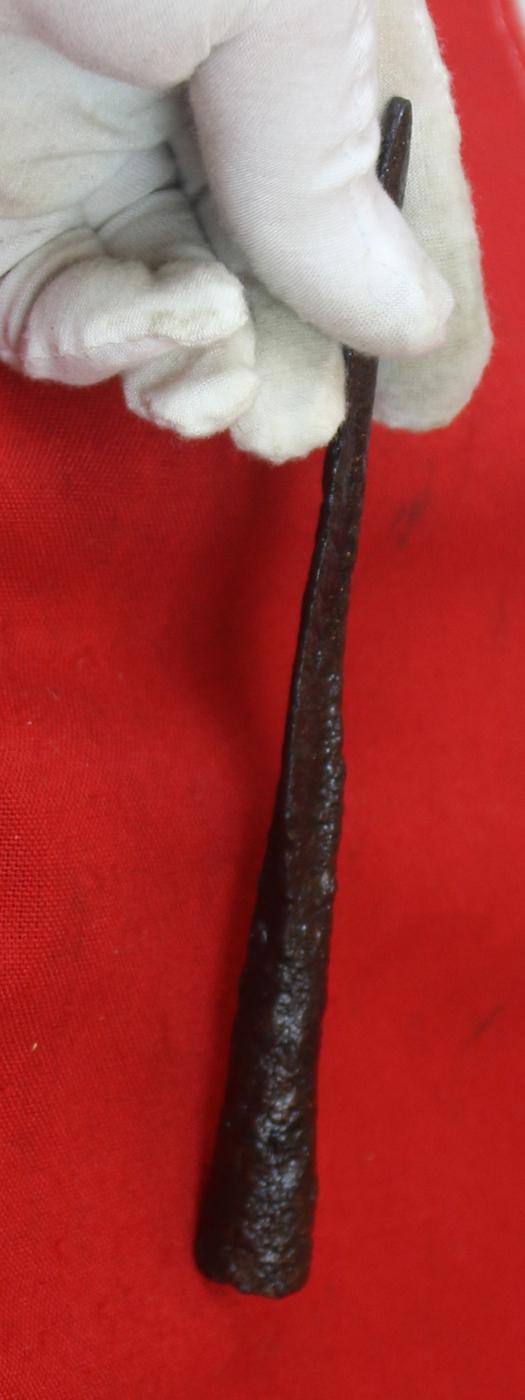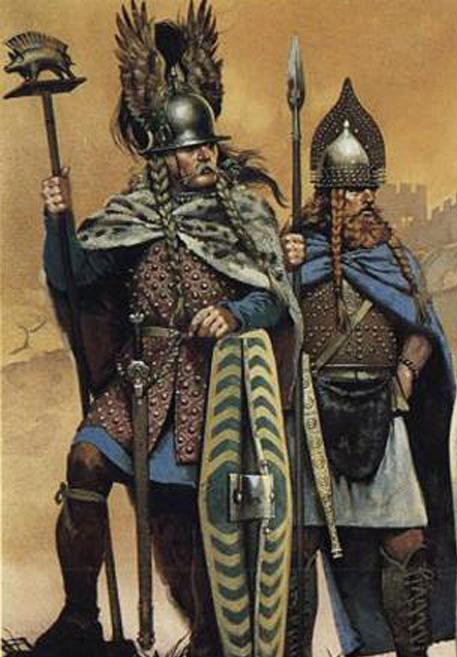A Fine & Rare Celtic Spear Head 1800 to 2300 Years Old. The Form of Spear Faced By The Legionary's of Julius Caesar in His Wars in Gaul
3rd century BC-2nd century AD. An iron spearhead with circular hollow socket, flared to narrowed blade with central spine. Socket pin still intact. Celtic armies first came to the attention of historians when the Gauls, led by their king Bran (Brennus), sacked Rome in 390 BCE, and again in 279 BCE when they looted Delphi as they passed through Greece on their way to Asia. The Celts attacked the Romans again in 225 BCE and were frequent mercenary allies of Carthage during the Punic Wars. The Celts thus gained a reputation with Latin and Greek writers for being fierce warriors and skilled horsemen who also fielded chariots in battle. Julius Caesar faced them when he invaded Gaul. They were light, pulled by two horses, and had an open front and back with double hoops at the sides. Containing two men they were used to attack enemy cavalry first by throwing javelins and then one man dismounted to fight on foot while the rider drove the chariot to a safe distance to await a retreat if necessary. Caesar describes them as driven with great skill and so were a highly manoeuvrable weapon of disruption and attack.
Celtic warriors were known for their long hair and imposing physique. They are depicted in Greek art with their distinctive long shields (wooden panels covered in decorated hide) and long swords. Such was the respect for Celtic warriors that Hellenistic kings who defeated Galatian armies were given the title of soter, meaning ‘saviour’. Although Galatian armies were almost always defeated by their more disciplined and better-equipped enemies in single battles, once conquered, they did fight successfully as mercenaries in many Hellenistic and Roman armies.
Code: 24851









